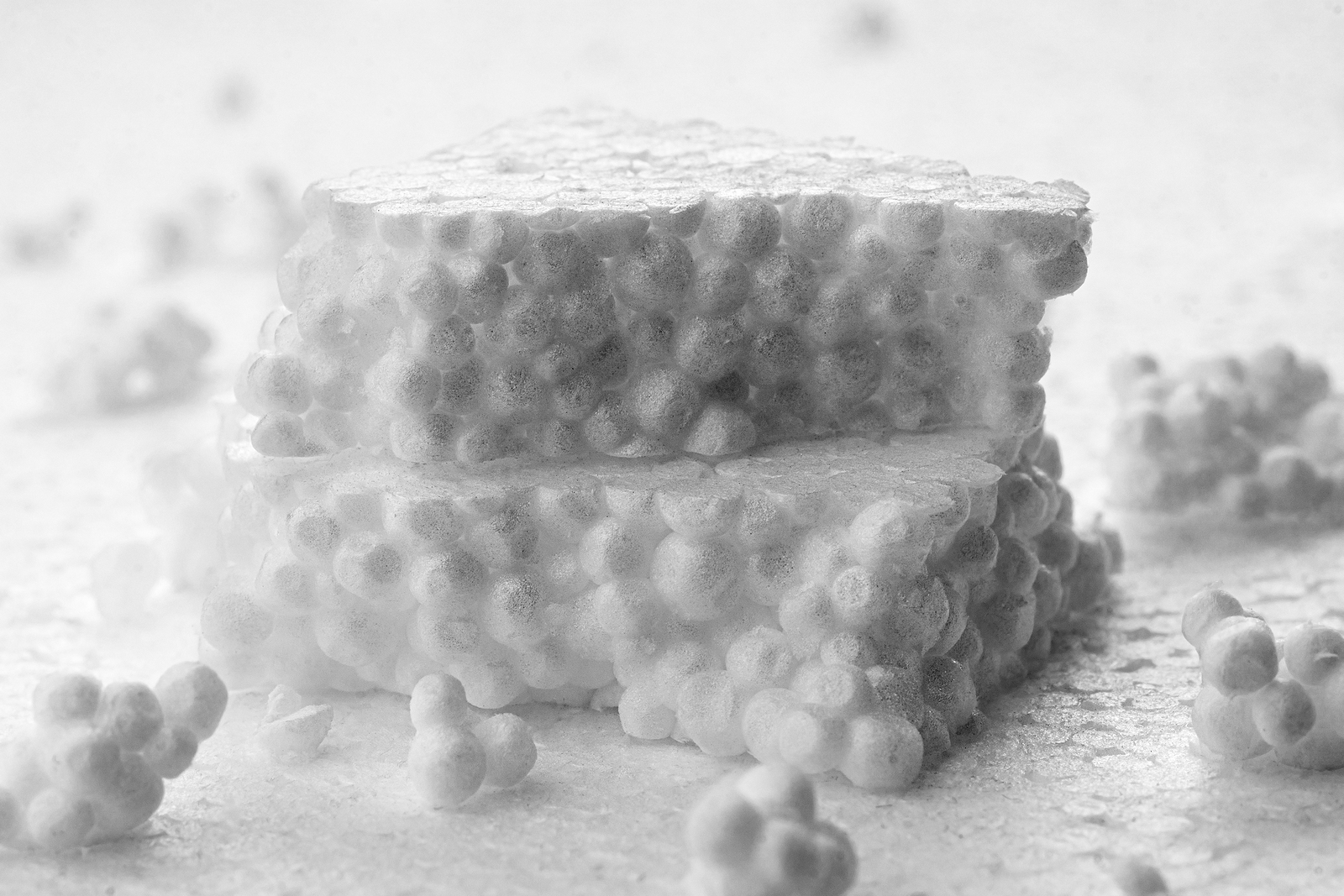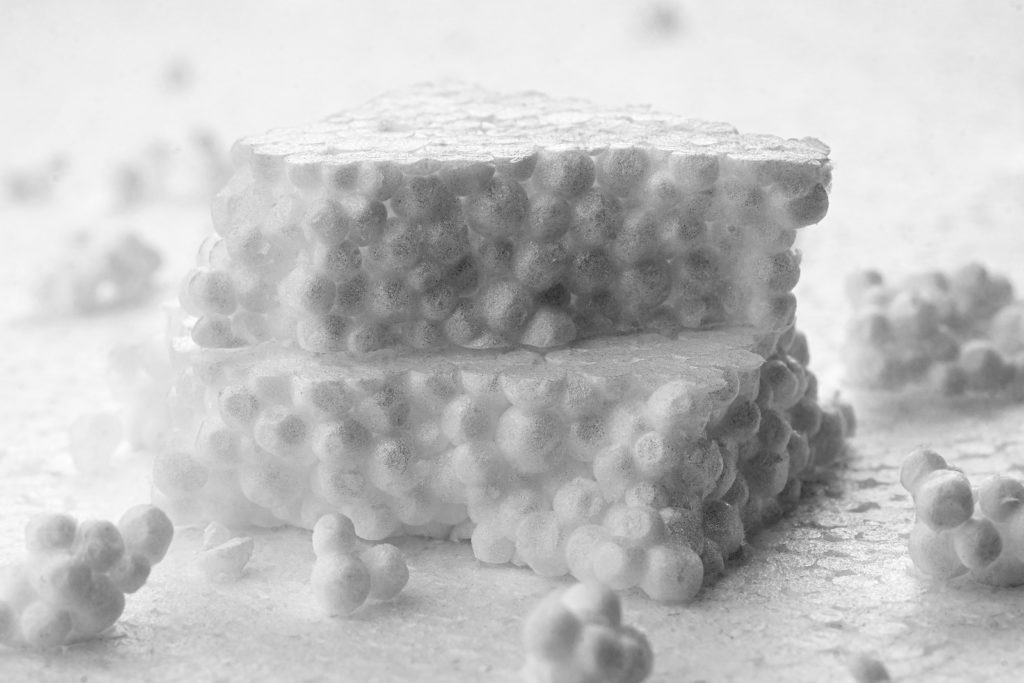
Styrofoam ceiling tiles are inexpensive but do not perform well enough to be used within any critical listening environment. Styrofoam ceiling tiles are lightweight and that is why people consider them for a ceiling application. Most of these styrofoam ceiling tiles are designed to fit into a dropped ceiling system so weight is a factor to consider. Unfortunately, styrofoam ceiling tiles are made up of styrofoam which is a packing material type that is used to protect items during shipping. Amplifiers often are shipped in boxes with styrofoam end caps to help protect the gear during shipping. Styrofoam ceiling tiles were never designed to absorb energy since styrofoam is a closed celled construction material.
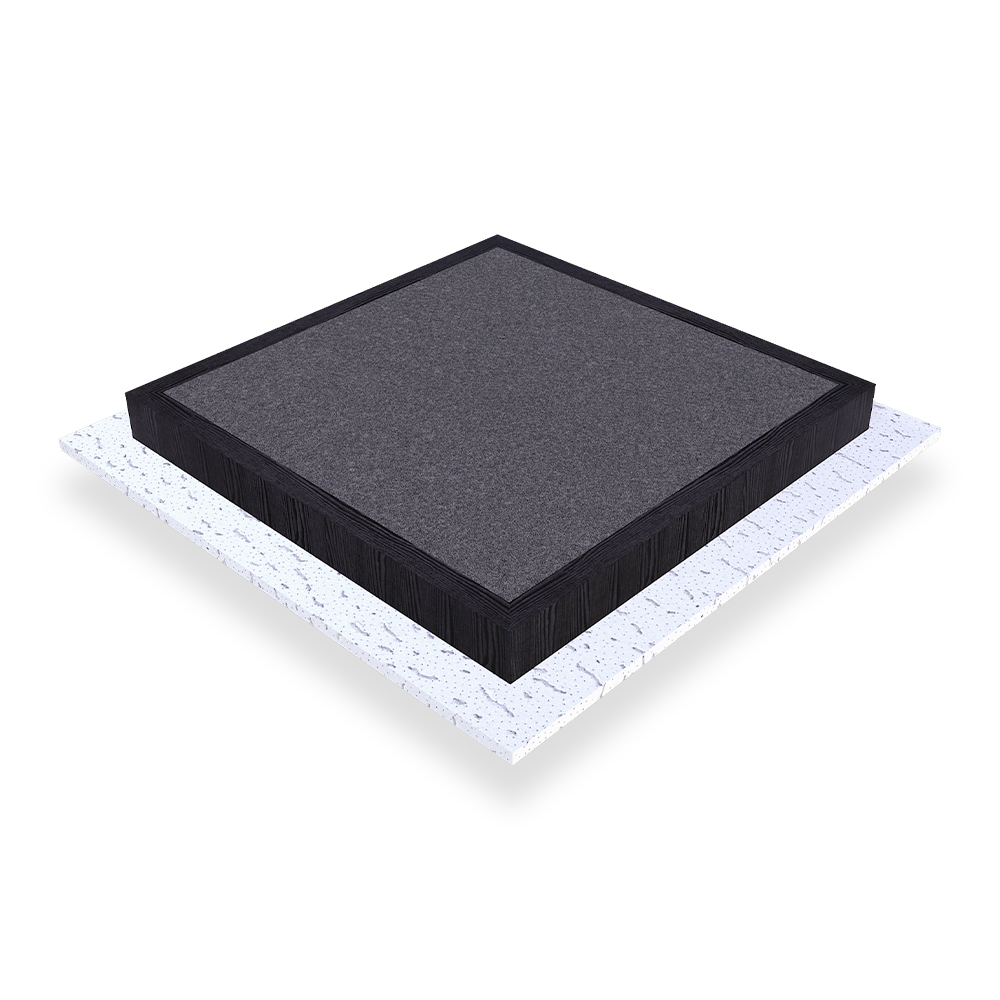
There are two types of foam technology. There is open celled foam and closed cell foam. Open celled foam is a sound absorption technology. The cells of the foam are open and allow for airflow across the foam surface area. This air flow produces friction. Friction then produces heat which is an energy transformation. As a result of this energy transformation, absorption occurs. Styrofoam is a closed cell construction material type. With closed cells, there can not be absorption. The cells are closed to provide a more sturdy construction methodology for shipping materials. Another example of closed cell foam is the foam used within your couch cushions or the seats within your car. Neither of these are designed to absorb sound. They are designed to support weight and not absorb sound. https://www.thomasnet.com/articles/plastics-rubber/closed-cell-open-cell/
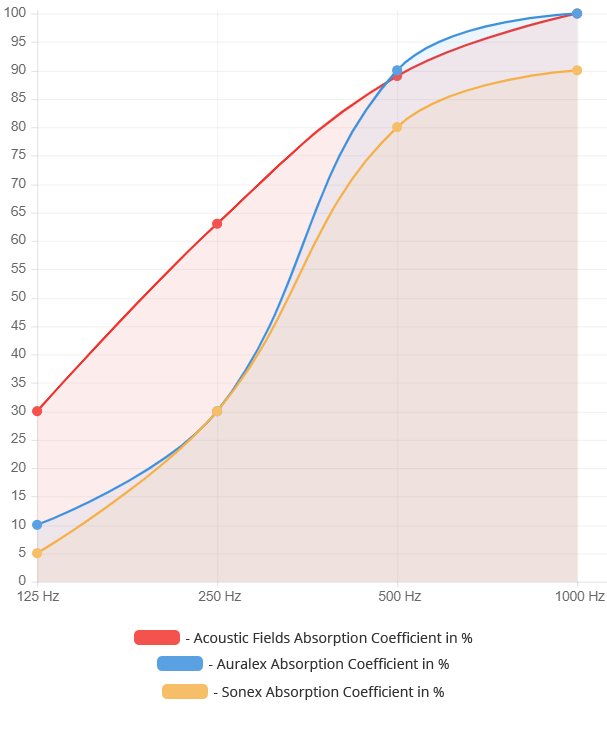
Instead of looking at styrofoam ceiling tiles, you need to be searching for acoustic foam material types. At Acoustic Fields, our Studio Pro Foam technology is designed specifically for music and voice. Music and voice require special rates and levels of absorption in order to produce speech intelligibility. Speech intelligibility is a measure of how many words you can hear clearly in a ten word sentence. When we are dealing with S.I. , we want to be able to achieve at least a 80% rate. We need to be able to hear 8 out of every 10 words within our test sentence. Our brains fill in the rest of the information we require for comprehension and understanding. In order for this to occur, we must have the appropriate rates and levels of absorption. https://www.acousticfields.com/product/acoustic-foam/
The rate of absorption is how much energy is absorbed per square foot a material type absorbs at. The level of absorption is how low in frequency the technology works at. Let’s use our foam technology as an example. If you examine our foam performance, you will see that it is designed to begin absorption at 125 Hz. frequency range and goes up through 500 Hz. After 500 hz., the foam absorbs at 100% all the way up to 6,300 hz. This frequency range from 125 hz. – 500 hz. is critical for music and voice and any technology that is used to absorb energy to manage music and voice must take this frequency range into consideration in order to satisfy speech intelligibility requirements. When treating surface areas within any room, you must consider the usage and the amount of energy that will be placed within the room.
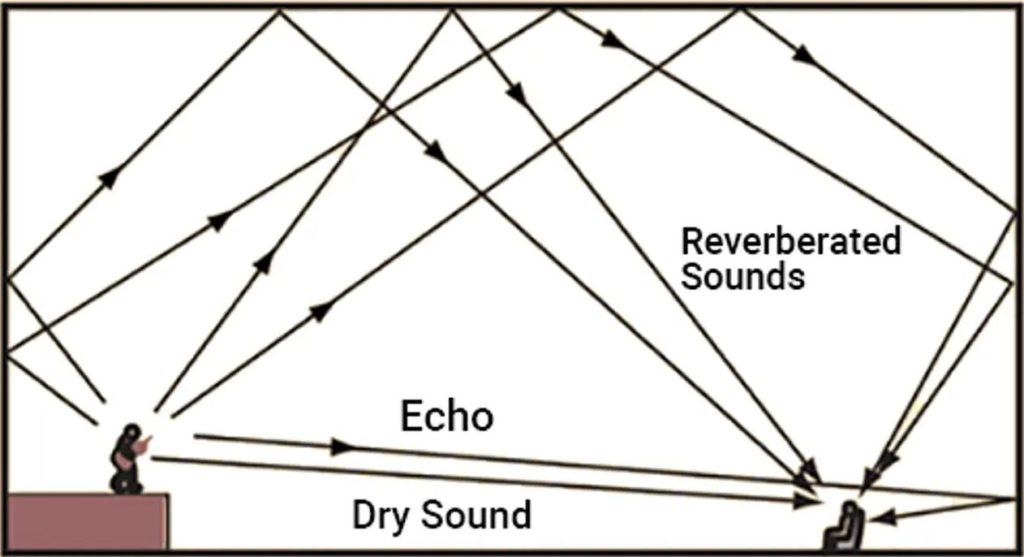
Every room surface area contributes 17% to the reverberation issues within a room. Reverberation is how long a sound stays around within a room after it has been spoken, sung, or played. Reflections from our walls, floor, and ceiling all add together to produce room distortion. This reflection distortion is produced by adding up all the surface area material types, square footage, and room usage in order to prescribe the required treatment technologies. A room where a band is playing will be different from a room where a voice over artist is going to be working. The amount of energy produced by both sources must be calculated in order to prescribe the amount of treatments, how much surface area to cover, and what rate and level of absorption to use. https://www.merriam-webster.com/dictionary/reverberation


